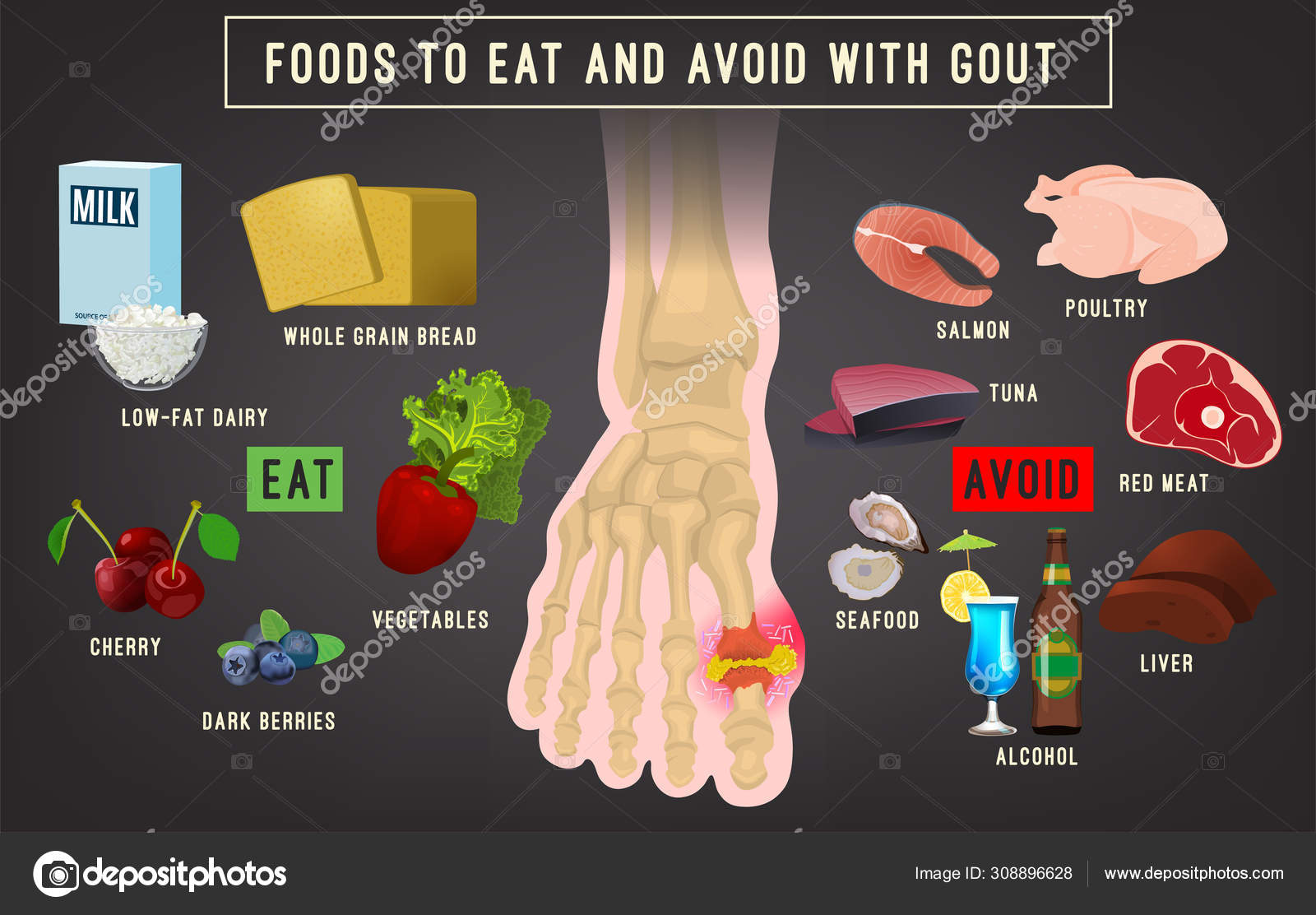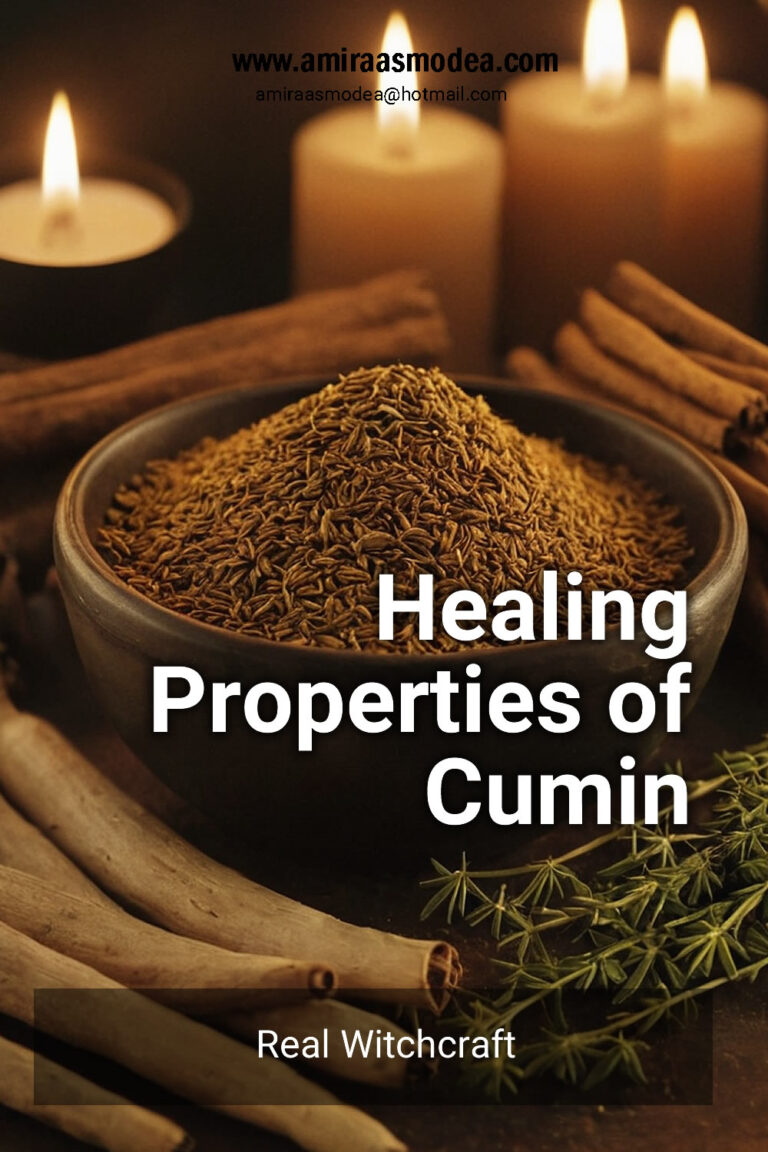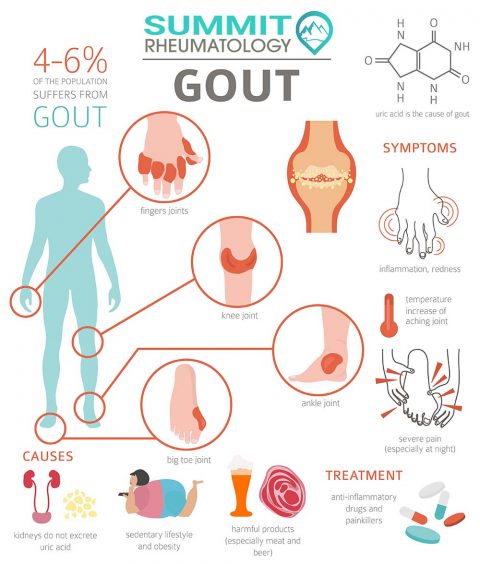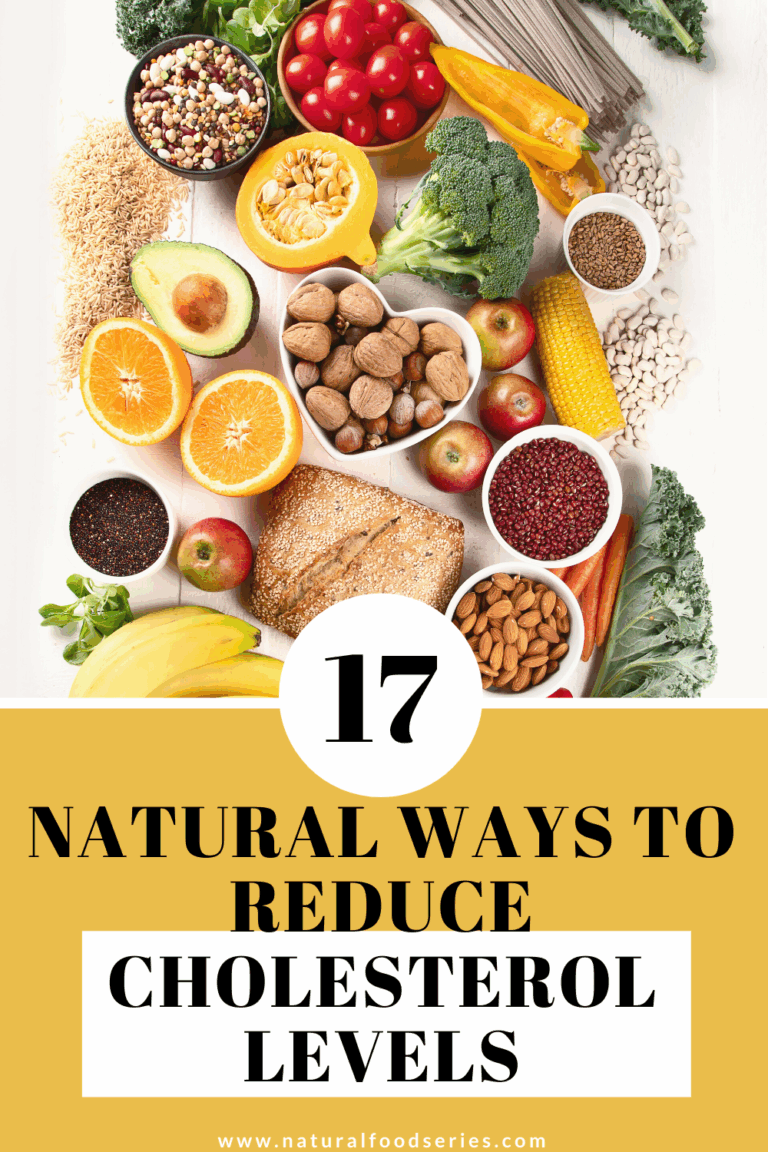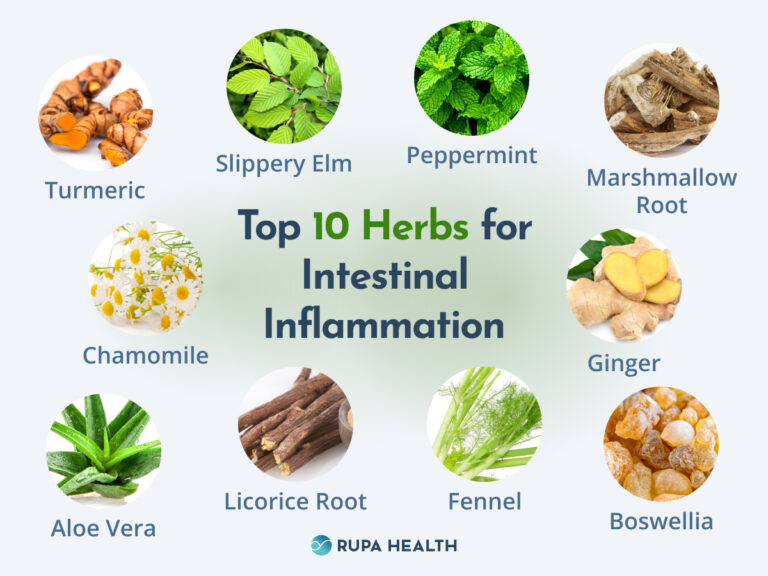Is Your Favorite Drink Fueling Your Gout? The Truth About Alcohol and Sugary Beverages
Imagine this: You’re settling in after a long day, perhaps with a frosty beer, a celebratory glass of wine, or a refreshingly sweet soda. The day’s stresses begin to melt away, and a sense of calm descends. For many, this ritual is harmless, a small pleasure earned. But for millions worldwide, this seemingly innocuous choice could be a silent accomplice, meticulously laying the groundwork for a future of searing, debilitating pain – the kind that makes a mere bedsheet feel like a crushing weight. This is the truth about gout, and how your favorite beverages, particularly alcohol and sugary drinks, might be fueling its fiery agony.
Gout, often dismissed as an "old man’s disease" or a relic of aristocratic excess, is anything but. It’s a cunning, chronic inflammatory arthritis caused by the accumulation of excess uric acid in the body, leading to the formation of razor-sharp urate crystals in the joints. The resulting attacks are notoriously painful, often described as worse than childbirth or a broken bone. And while genetics certainly play a role, the modern lifestyle, replete with its dietary indulgences, has turned gout into an increasingly common and debilitating condition affecting younger populations and women post-menopause.
But what exactly is the connection between what you drink and this excruciating condition? The answer lies deep within our metabolic pathways, a complex dance of enzymes, sugars, and alcohols that can either maintain harmony or tip the scales towards a painful imbalance.
The Silent Enemy Within: Understanding Gout’s True Nature
Before we uncork the bottles and pop the cans, it’s crucial to understand the enemy we’re facing. Gout isn’t just a joint ache; it’s a systemic metabolic disorder. At its heart is hyperuricemia, a condition characterized by abnormally high levels of uric acid in the blood. Uric acid is a natural byproduct of the breakdown of purines, compounds found in our bodies’ cells and in many foods and beverages.
Normally, our bodies maintain a delicate balance: purines are metabolized into uric acid, which is then filtered by the kidneys and excreted in urine. However, when either too much uric acid is produced, or the kidneys fail to excrete enough of it, levels rise. When these levels become excessively high, uric acid can crystallize into monosodium urate crystals, which then deposit in joints (most commonly the big toe, but also ankles, knees, elbows, wrists, and fingers), tendons, and even soft tissues.
These microscopic, needle-like crystals are the true culprits. When they shed from the joint lining into the joint space, the immune system perceives them as foreign invaders, triggering an intense inflammatory response. This is the gout attack: a sudden onset of excruciating pain, swelling, redness, and tenderness that can last for days or even weeks. Left untreated, chronic hyperuricemia can lead to repeated attacks, permanent joint damage, kidney stones, and even the formation of visible chalky deposits called tophi under the skin.
This intricate metabolic dance, governed by genetics, diet, and lifestyle, is where our beverages enter the scene. They aren’t just empty calories or refreshing sips; they are potent modulators of uric acid production and excretion.
The Alcoholic Conundrum: Unpacking the Pint, Pouring the Truth
For centuries, alcohol has been intrinsically linked with gout. Historically, it was dubbed the "disease of kings" or "rich man’s disease," primarily because the affluent were the only ones who could afford the rich diets and copious amounts of alcohol that so often preceded an attack. While this class-based perception has faded, the scientific evidence for alcohol’s role in gout has only strengthened.
Alcohol, in almost all its forms, is a potent trigger for gout attacks and a significant contributor to chronic hyperuricemia. But it’s not a simple one-to-one relationship; several mechanisms are at play:
-
Increased Uric Acid Production: Alcohol metabolism itself increases the breakdown of adenosine triphosphate (ATP) – the body’s energy currency – into adenosine monophosphate (AMP). AMP is a purine, and its subsequent degradation leads to a surge in uric acid production. Think of it as throwing more fuel onto the uric acid fire.
-
Impaired Uric Acid Excretion: This is perhaps alcohol’s most significant and insidious contribution. As the liver metabolizes alcohol, it produces lactate. Lactate and uric acid compete for excretion by the kidneys. When lactate levels are high, the kidneys prioritize excreting lactate over uric acid, effectively reducing the body’s ability to clear excess uric acid from the bloodstream. It’s like a traffic jam at the kidney exit ramp, with uric acid stuck in a queue.
-
Dehydration: Alcohol is a diuretic, meaning it promotes fluid loss through increased urination. Dehydration concentrates uric acid in the blood, making it more likely to crystallize. Imagine trying to dissolve a large amount of salt in a small glass of water versus a large bucket – the smaller the volume, the higher the concentration.
While all types of alcohol can contribute to gout, their impact varies:
-
Beer: The Unquestioned Villain. Beer stands out as the most detrimental alcoholic beverage for gout sufferers. Why? It’s a double whammy. Firstly, beer contains a significant amount of purines from its yeast content, directly increasing the purine load in the body. Secondly, it contains alcohol, which then triggers the mechanisms of increased production and decreased excretion discussed above. This potent combination makes beer a primary suspect in gout attacks and a major driver of hyperuricemia. Studies consistently show a dose-dependent relationship: the more beer consumed, the higher the risk of gout.
-
Spirits: A Significant Risk. Hard liquors like whiskey, vodka, gin, and rum do not contain the purines found in beer. However, they are pure alcohol and thus contribute to gout through the other mechanisms: increased uric acid production during metabolism and, crucially, impaired renal excretion due to lactate production. Their diuretic effect also contributes to dehydration. While perhaps not as potent as beer in directly introducing purines, their high alcohol content makes them a considerable risk.
-
Wine: The Fickle Friend. Wine’s relationship with gout is more nuanced and often a source of confusion. Some studies have suggested that moderate wine consumption might have less of an impact on gout risk compared to beer or spirits, and some even hint at a neutral or slightly protective effect in some populations. However, the prevailing scientific consensus is that wine still contains alcohol and thus contributes to gout risk through the same metabolic pathways as other alcoholic beverages. The purine content in wine is generally low, which might explain why it’s sometimes perceived as "safer" than beer. Yet, the alcohol itself is the problem. Any perceived "protective" effects often relate to other cardiovascular benefits, not a reduction in uric acid. For someone with gout, even wine should be approached with extreme caution and moderation, if not outright avoidance during flare-ups.
The "truth" about alcohol and gout is unequivocal: for those susceptible to gout, or those already diagnosed, alcohol, particularly beer, is a dangerous accelerant. It’s not just about avoiding it during an attack; consistent, heavy alcohol consumption maintains elevated uric acid levels, increasing the frequency and severity of future episodes.
The Sweet Deception: How Sugary Beverages Betray Your Joints
If alcohol is the well-known villain, then sugary beverages are the insidious, often overlooked accomplice. For decades, the focus on gout triggers primarily centered on purine-rich foods and alcohol. However, a growing body of research has unveiled a startling truth: fructose, the sugar found abundantly in sugary drinks, is a potent and direct contributor to hyperuricemia and gout.
This revelation has profound implications, especially in a world where sugary sodas, fruit juices, and energy drinks are ubiquitous. It’s a "sweet deception" because many people don’t associate a seemingly harmless soda with the crippling pain of gout, and some even mistakenly believe fruit juice to be a universally healthy choice.
Here’s how fructose wreaks havoc:
-
Direct Uric Acid Production: Unlike glucose, which can be metabolized by nearly every cell in the body, fructose is primarily metabolized in the liver. This metabolic pathway is unique and, unfortunately, highly problematic for uric acid levels. When fructose is metabolized, it rapidly depletes ATP (adenosine triphosphate) – the body’s energy currency – in the liver cells. This depletion leads to a surge in AMP (adenosine monophosphate), which, as we learned earlier, is a purine that is then rapidly converted into uric acid. This is a direct, accelerated pathway to uric acid production, bypassing many of the normal regulatory mechanisms. It’s an express lane to hyperuricemia.
-
Impaired Uric Acid Excretion: Beyond increasing production, fructose also appears to impair the kidneys’ ability to excrete uric acid. Research suggests that high fructose intake can reduce renal uric acid clearance, further contributing to its accumulation in the blood.
-
Insulin Resistance and Metabolic Syndrome: Chronic high intake of fructose, particularly from sugary beverages, is strongly linked to insulin resistance, obesity, and metabolic syndrome. These conditions are themselves significant risk factors for gout. Fructose contributes to fat accumulation in the liver, promotes inflammation, and disrupts glucose metabolism, creating a perfect storm for a range of metabolic disorders, with gout being a prominent feature.
Let’s break down the main culprits in the sugary beverage category:
-
Sugar-Sweetened Soft Drinks (Sodas): The Prime Offender. These are typically loaded with high-fructose corn syrup (HFCS) or sucrose (which is half fructose, half glucose). A single serving can contain alarming amounts of fructose, triggering the rapid uric acid production described above. Regular consumption of these drinks is one of the strongest dietary predictors of gout risk.
-
Fruit Juices: The Deceptive "Health" Drink. This is where the deception is most potent. Many people believe fruit juice is a healthy alternative to whole fruit. While whole fruit contains fiber which slows sugar absorption and provides satiety, fruit juice concentrates the natural sugars (including fructose) from multiple fruits into a single serving, often stripping away the beneficial fiber. A glass of orange juice, for instance, can contain as much sugar (and fructose) as a can of soda, without the mitigating effects of fiber. Thus, fruit juices, especially in large quantities, can be just as problematic for uric acid levels as sodas.
-
Energy Drinks and Sports Drinks: Many of these beverages are also heavily sweetened with fructose-containing sugars, making them contributors to gout risk. While designed for performance, their sugar content can be a hidden danger for those susceptible to gout.
The evidence is clear: the rise in gout prevalence over recent decades mirrors the rise in consumption of sugary beverages. This isn’t a coincidence; it’s a cause-and-effect relationship that demands attention. For anyone battling gout or at risk, eliminating or drastically reducing sugary drinks is a crucial, non-negotiable step.
Beyond the Glass: A Holistic View of Gout Triggers
While alcohol and sugary beverages are undeniably powerful triggers, it’s essential to remember that gout is a multifactorial disease. They are significant pieces of the puzzle, but not the entire picture. A holistic approach to managing gout requires considering other dietary and lifestyle factors:
-
Dietary Purines: Foods naturally rich in purines contribute to the body’s uric acid load. The most notable include:
- Red Meats and Organ Meats: Liver, kidney, sweetbreads, beef, lamb, and pork are high in purines.
- Seafood: Shellfish (shrimp, crab, lobster, scallops) and certain fish (sardines, anchovies, herring, mackerel, trout) are particularly high.
- Yeast Extracts: Found in some gravies and spreads.
While these foods are important, research suggests that the impact of high-fructose beverages and alcohol can be even more potent than dietary purines alone.
-
Hydration: The Simple Antidote: Drinking plenty of water is one of the simplest yet most effective strategies for gout prevention and management. Adequate hydration helps the kidneys flush out uric acid more efficiently, preventing its concentration and crystallization. Aim for at least 8-10 glasses of water daily.
-
Weight Management: Obesity is a significant risk factor for gout. Excess body fat can lead to increased uric acid production and decreased uric acid excretion. Losing weight, even moderately, can significantly lower uric acid levels and reduce the frequency of attacks. However, rapid weight loss (e.g., through crash diets) can sometimes trigger gout attacks due to increased ketone body production, which competes with uric acid for renal excretion. A gradual, sustainable approach is key.
-
Medications: Certain medications can elevate uric acid levels, including:
- Diuretics (Water Pills): Commonly prescribed for high blood pressure, these can reduce uric acid excretion.
- Low-Dose Aspirin: Can also impair uric acid excretion.
- Niacin (Vitamin B3): High doses can increase uric acid.
- Immunosuppressants: Used in organ transplant patients.
It’s crucial to discuss all medications with your doctor, as alternatives or management strategies may be available.
-
Comorbidities: Gout often coexists with other serious health conditions, forming a cluster known as metabolic syndrome. These include:
- Hypertension (high blood pressure)
- Type 2 Diabetes
- Kidney Disease
- Hyperlipidemia (high cholesterol and triglycerides)
Managing these underlying conditions is vital for overall health and for effectively controlling gout.
-
Genetics: Family history plays a significant role. If your parents or grandparents had gout, your risk is inherently higher. This genetic predisposition means that even with a "healthy" lifestyle, you might still need to be more vigilant than others regarding dietary triggers.
Crafting Your Defense: Strategies for a Gout-Conscious Life
The narrative of gout doesn’t have to be one of inevitable pain. Armed with knowledge, you can actively reclaim control. The strategies for managing and preventing gout are centered on sensible lifestyle changes and, when necessary, medical intervention.
-
Re-evaluate Your Relationship with Alcohol:
- During an Attack: Complete abstinence is highly recommended. Even small amounts can prolong the inflammation.
- For Prevention: Strict moderation is key. This generally means limiting alcohol to 1-2 servings per day for men, and 1 serving per day for women, but for gout sufferers, even this may be too much. Consider reducing consumption to a few times a week or opting for alcohol-free alternatives.
- Prioritize: If you choose to drink, understand the risks associated with different types. Beer is generally the worst choice.
-
Declare War on Sugary Beverages:
- Eliminate Sodas and Sweetened Drinks: This is arguably the single most impactful dietary change you can make. Read labels carefully for high-fructose corn syrup, sucrose, and other added sugars.
- Limit Fruit Juice: Treat fruit juice like a treat, not a staple. Opt for whole fruits, which provide fiber and satiety, reducing the fructose load.
- Be Wary of "Natural" Sweeteners: Even natural sweeteners like agave nectar are very high in fructose.
-
Embrace the Power of Water: Make water your primary beverage. Keep a water bottle handy and sip throughout the day. Infuse it with cucumber, lemon, or mint for flavor without added sugar.
-
Adopt a Gout-Friendly Diet:
- Prioritize Whole Foods: Focus on fruits, vegetables, whole grains, and lean proteins.
- Low-Fat Dairy: Studies suggest that low-fat dairy products (milk, yogurt) may actually help lower uric acid levels.
- Vitamin C: Research indicates that vitamin C can modestly lower uric acid levels. Include foods rich in vitamin C like citrus fruits, bell peppers, and strawberries.
- Coffee: Moderate coffee consumption has been associated with a lower risk of gout in some studies, but more research is needed, and it shouldn’t be seen as a cure.
- Limit High-Purine Foods: Reduce intake of red meat, organ meats, and high-purine seafood, especially during flare-ups or if you have persistently high uric acid.
-
Maintain a Healthy Weight: Gradual, sustainable weight loss through diet and exercise can significantly reduce uric acid levels. Consult with a dietitian for personalized guidance.
-
Stay Active: Regular physical activity not only aids in weight management but also improves overall metabolic health, which can positively impact gout.
-
Work Closely with Your Healthcare Team:
- Diagnosis: Ensure an accurate diagnosis, as other forms of arthritis can mimic gout.
- Medication: If lifestyle changes aren’t sufficient, your doctor may prescribe medications to lower uric acid (e.g., allopurinol, febuxostat) or manage acute attacks (e.g., NSAIDs, colchicine, corticosteroids). Adherence to these medications is critical for long-term control and preventing joint damage.
- Regular Monitoring: Regular blood tests to monitor uric acid levels are essential to ensure treatment is effective.
The Path Forward: Reclaiming Your Life from Gout
The story of gout is often one of misunderstanding and preventable suffering. But it doesn’t have to be. The truth about alcohol and sugary beverages as powerful drivers of hyperuricemia is a critical piece of the puzzle, offering a clear pathway for intervention.
By understanding the intricate metabolic dance, by recognizing the insidious nature of fructose, and by acknowledging the well-established dangers of alcohol, individuals prone to gout can make informed choices that dramatically alter their prognosis. It’s not about sacrificing all pleasure, but about making conscious, health-affirming decisions. It’s about choosing a glass of water over a soda, opting for an alcohol-free evening, and understanding that these small choices accumulate into a profound impact on your joint health and overall well-being.
Gout is a formidable opponent, but it is not invincible. With knowledge as your sword and disciplined choices as your shield, you can confront the truth about your favorite drinks, tame the fiery beast within, and reclaim a life free from its debilitating grip. The power to change the narrative lies within your grasp, one mindful sip at a time.
